Photo essay for the Special Initiative “From Fear to Resilience: Visual Storytelling of COVID-19 in Southeast Asia” by SEA Junction and Partners.
| Title: | Warding Off Illness with Traditional Talismans in Lao PDR and other neighboring countries |
| Storyteller/Artist: | Tara Gujadhur of Traditional Arts and Ethnology Centre (TAEC) |
| Photographer | TAEC and various others |
| Place: | Lao PDR |
| Time: | March – August 2020 |
The Traditional Arts and Ethnology Centre (TAEC) in Lao PDR explores, study and celebrate the ethnic diversity and cultural heritage in Laos. We were thus immediately interested to observe the emergence of traditional effigies and talismans in Laos In March 2020, when the danger of COVID-19 became recognised.
The TAEC research team could not directly observe all of these phenomena, but saw several pictures of these effigies on social media and started to notice them also in Luang Prabang. We gathered this visual documentation (with selected photos presented here) and tried to enquire about their origin and context, in order to interpret the phenomenon based on previous experiences and field trips.
The practice is closely related to the separation that many communities in Laos apply between the safe space of their village and the outside world, where potentially dangerous spirits and entities roam. Some ethnic groups, such as the Akha, Kmhmu, and Lanten, erect physical village “gates,” using wood, bamboo, and symbolic amulets to delineate the boundary between the two, protecting the village’s inhabitants. Effigies sometimes accompany these gates as further guardians, as do taleos, traditional talismans of protection across Laos.
When COVID-19 appeared, a number of these effigies, taleos, and gates cropped up in rural and urban areas. The effigies were often placed along roads leading to villages, as a marker and warning. Some figures wore helmets, sunglasses, and masks to represent travellers, who are outsiders and may carry the virus. Thus, they depict that which the village wishes to ward off. Others depict fierce protectors, with guns, wooden swords, bamboo spikes, and sharp teeth added to the human and animal-like figures to frighten away any bad entities that could enter the village, be it evil spirits or viruses. (And most of us would certainly think twice about entering a village when confronted by such figures!)
In Luang Prabang town, bamboo woven talismans or “taleos” were seen on the fences of homes. The presence of the talismans, used by many ethnic groups, traditionally signals a demarcated space or event, but also a sanction on entering or leaving a place. The taleo is used for protection, as it guards the entrance from unwanted human or supernatural visitors. Some taleos are accompanied by a branch of a thorny tree (the sharp spikes offer further protection) and a short blessing in Pali, the sacred language of Theravada Buddhism. In the current situation, the taleo protects the household against harm, such as from COVID-19, and can also mark the confinement of the family, following government recommendations. When confronted with a taleo on the front of a property, visitors should call in to ask for permission to enter. Like the village gate tradition, these symbolic boundaries separate and protect the safe and controlled space of the village or the household from the outside world, and can purify residents upon their return.
Soon, TAEC discovered that this protective use of effigies and talismans was not limited to Lao PDR, but could also be found in neighbouring countries. The tradition is also common in Cambodia, where friends of TAEC have shared photos of “ting mong” or “scarecrows” on the gates of homes, even in urban areas. An article in Foreign Policy even talks of “spiritual army battles” with ting mong guarding homes against COVID-19 in Takeo, Kandal, and Kampong Speu provinces as can be read here. Also in northern Thailand, similar practices have been noted (see photos). Farther away, Lao and Hmong communities in California have shown trust in the protective power of bamboo woven talismans.
That being said, these traditional protections in no way exclude people in Lao PDR from obeying bio-medical recommendations of social distancing, isolation for labourers returning from Thailand, and frequent handwashing, and wearing masks. Text messages, social media posts, radio and TV campaigns, posters, and village speakers have been effective at communicating how to avoid Covid-19.
Photographer/Storyteller
Tara Guajadhur co-founded the Traditional Arts and Ethnology Centre (TAEC) with Thongkhoun Soutthivilay in 2006. Tara has a BA in Anthropology and an MSc in Sustainable Tourism, and came to Laos in 2003 with a development agency. She spent three years advising the government on sustainable tourism, primarily in ethnic communities before starting TAEC. She guides TAEC’s research, marketing and strategic development, among other responsibilities.
TAEC is a local social enterprise located in the UNESCO World Heritage town of Luang Prabang, Lao PDR and founded in 2006 to promote the appreciation and transmission of Laos’ ethnic cultural heritage and livelihoods based on traditional skills. To connect with them visit https://www.taeclaos.org/about/.
Organizers
“From Fear to Resilience: Visual Storytelling of COVID-19 in Southeast Asia” is a special initiative of SEA Junction and its partners Beyond Food, GAATW and Bangkok Tribune to promote an alternative narrative of survival, resilience and solidarity. We are asking for short stories in the form of photo essays, short documentaries and illustrated art essays in any language of Southeast Asia (to be later translated into English) or in English. For more background and other stories click here.
SEA Junction
SEA Junction, established under the Thai non-profit organization Foundation for Southeast Asia Studies (ForSEA), aims to foster understanding and appreciation of Southeast Asia in all its socio-cultural dimensions- from arts and lifestyles to economy and development. Conveniently located at Room 408 of the Bangkok Arts and Culture Center or BACC (across MBK, BTS National Stadium), SEA Junction facilitates public access to knowledge resources and exchanges among students, practitioners and Southeast Asia lovers. For more information see www.seajunction.org, join the Facebook group: http://www.facebook.com/groups/1693058870976440/ and follow us on twitter and Instagram @seajunction
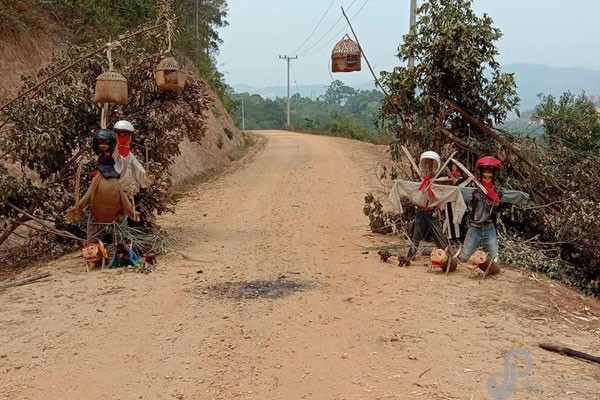
The effigies line the road to the village. (Photo credit- J’vilasone Rsz)
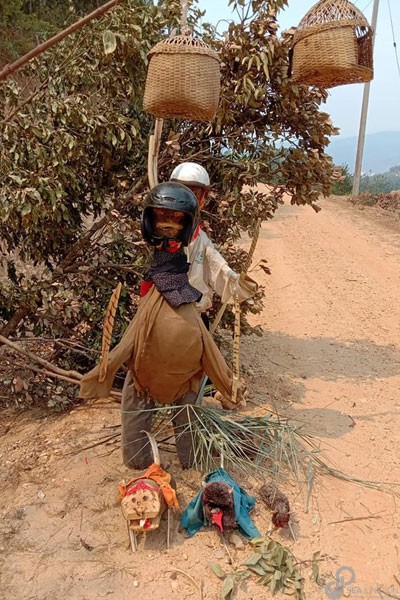
Effigies placed by a village gate in southern Laos (Photo credit J’vilasone Rsz )
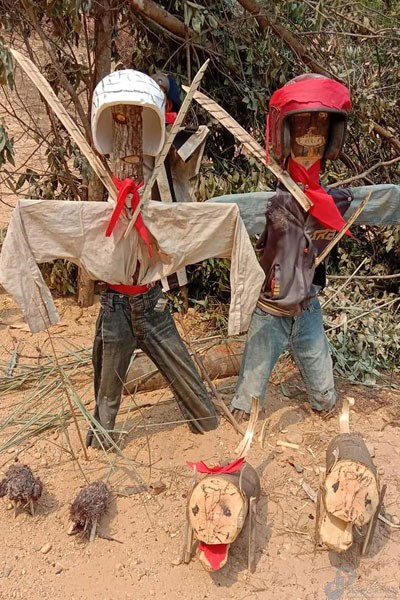
Effigies with knives, dogs, and helmets (Photo credit J’vilasone Rsz)

The effigies take different shapes and materials, depending on what is available (Photo credit- J’vilasone Rsz)
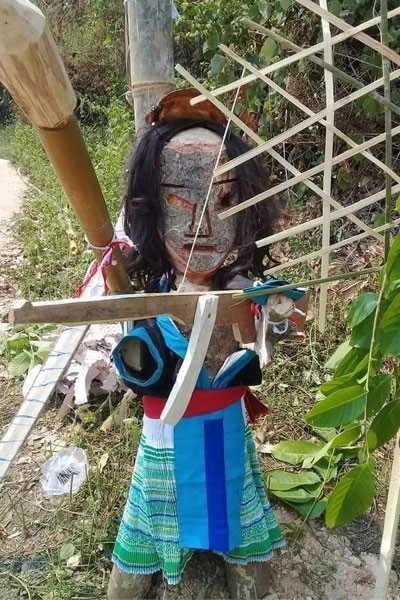
An effigy in Hmong clothing with a model gun and taleo. (Photo credit- Tseemtoskoj Xwb)

Taleo on a gate in Luang Prabang (Photo credit TAEC)
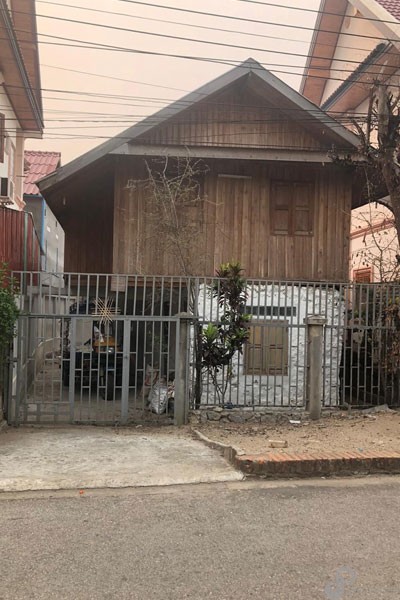
Taleo on a gate in Luang Prabang (Photo credit TAEC)
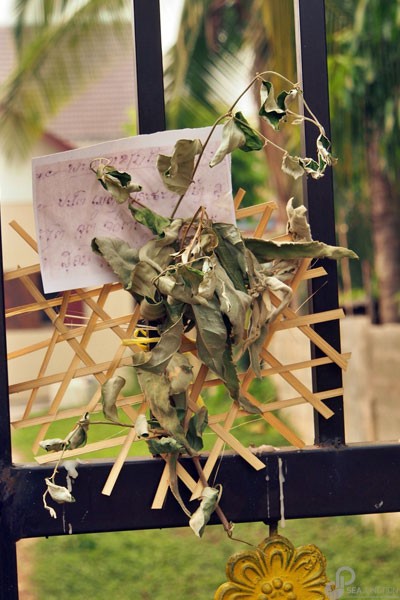
Taleo with a thorny plant and Pali blessing (Photo credit TAEC)
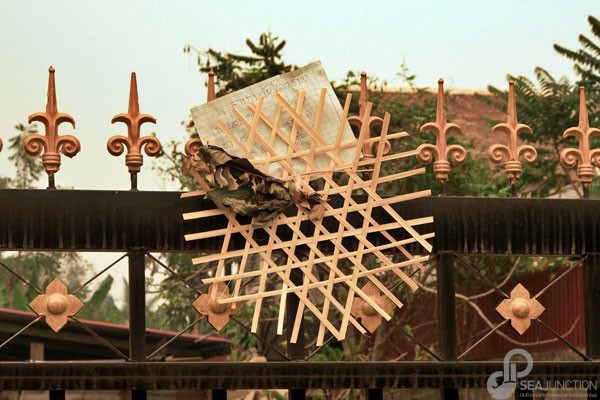
Taleo with a thorny plant and Pali blessing. (Photo credit TAEC)
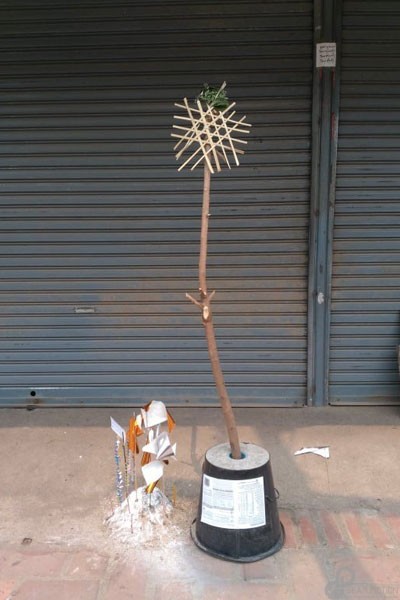
Taleo in front of a shophouse, with a homemade stupa. (Photo credit TAEC).
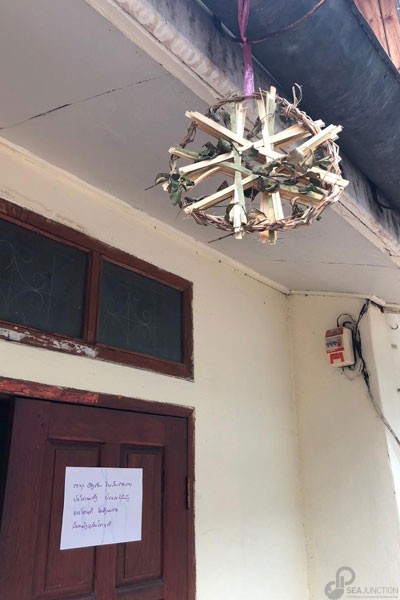
Taleos were hung above doors too. (Photo credit TAEC)
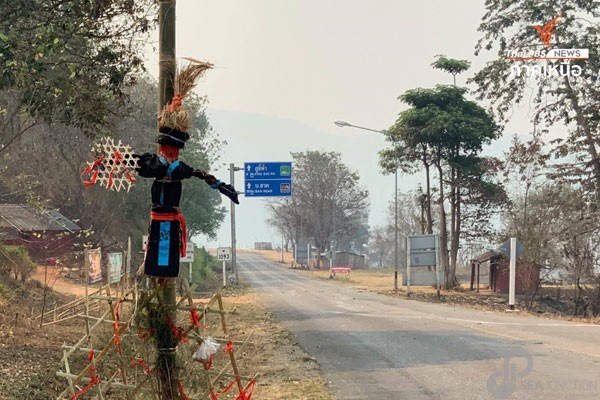
On Thai television, effigies and taleos were seen alongside roads in northern Thailand. (Photo derived from Thai PBS)
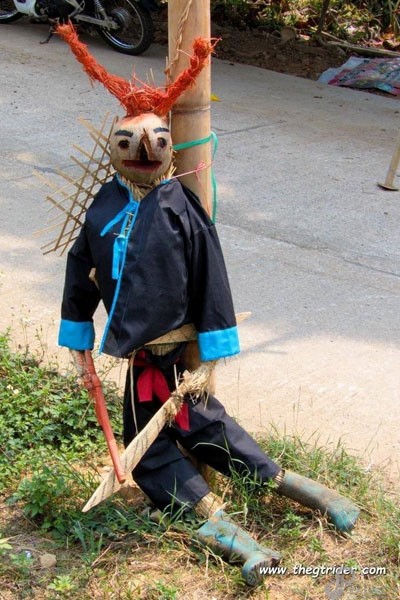
A Hmong effigy and taleo in northern Thailand. (Photo credit David Unkovich)
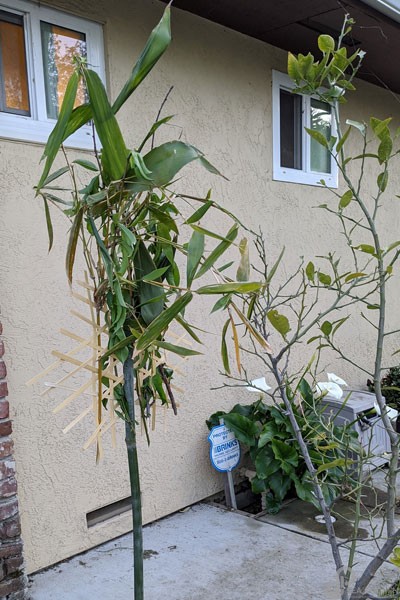
The practice was also seen in Lao and Hmong communities in California. (Photo credit Pachia Lucy Vang)
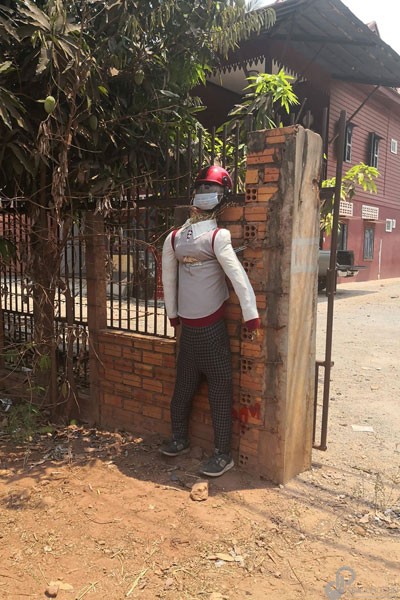
Cambodian “Ting Mong” were also photographed by friends of TAEC. (Photo credit Thomas Wanhoff)
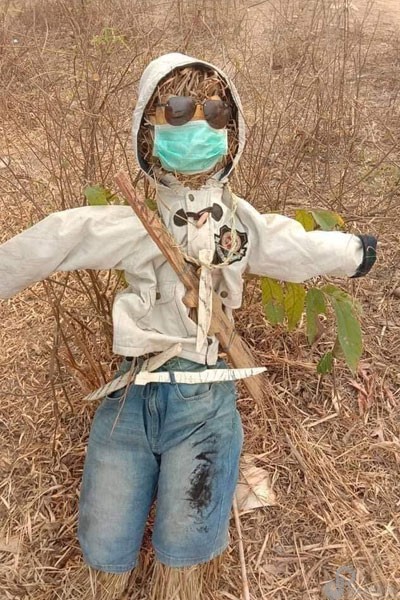
On social media, many examples of the effigies were shared. (Unknown from Tiktok)
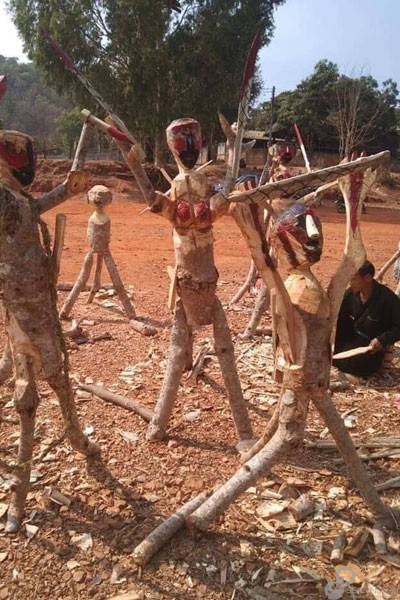
On social media, many examples of the effigies were shared. (Unknown from Tiktok)


